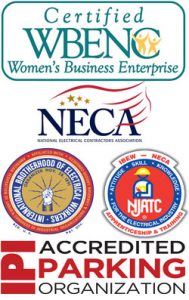
Last Friday, February 23, 2018 the U.S. Secret Service Tweeted the following at 2:29 PM:
“BREAKING: An individual driving a passenger vehicle struck a security barrier near the White House at 17th & E.”
At 2:32 PM they Tweeted again:
“UPDATE: The female driver of the vehicle was immediately apprehended by Secret Service Uniformed Division Officers.”
A woman armed with a handgun attempted to penetrate the perimeter security on the South lawn of the White House. Her Chevrolet van got only as far as the wedge barrier system protecting the entry lane. See above image courtesy of DNA (Daily News and Analysis) found at “Armed woman in van rams into White House barrier, arrested“. This was apparently her second attempt at gaining entry to the White House. No one was hurt but the attempt did cause a lock down.
Wedge Barrier Systems Deny Vehicle Access
I have previously written about Wedge Barriers Usefulness In Active Vehicle Barrier Systems. These wedge shaped barriers pivot up from the pavement to block traffic flow. A pneumatic or hydraulic system raises or lowers the blocking plate in a matter of seconds. Some even come equipped with barrier arms in tandem.
These and other barrier systems often are used in counter-terrorism, anti-ram applications. Crash rating standards are specified to determine appropriate applications. Note: See our Crash Rated Bollards page for a further explanation.
Wedge barrier systems help protect restricted areas and high security targets such as the White House, military bases, embassies, nuclear plants, government facilities, etc. Other barrier systems are used to stop regular vehicle traffic but are not crash rated. Some of those non-crash rated applications include parking access and revenue control systems (PARCS), car rental locations as well as garages and parking lots.
Wedges can either be installed on surface, in-ground and even in some cases are transportable for temporary usage. Other terms used to describe these wedge barrier systems include curb barrier, raising wedge or plate, curb barrier, etc. Pedestrian, motorcycle or bike access is not accessible once the wedge barrier is in the raised position.
For more information please see our post Selecting Anti Terrorist Active Vehicle Barrier Systems. For assistance in selection and installation of wedge vehicle barriers call ECI at 847.949.0134 or use the link below for direct contact information.


